Bill wrote in to tell us about his sponsored bike ride in aid of the Douglas Bader Foundation late January, early February this year.
How did it start? It began with a mad idea to cycle
somewhere warm in the middle of our cold winter, experience two summers in
one year and lose some weight. At first I was interested in Guide Dogs for
the Blind’s ride in New Zealand. I started training in August 2003,
but when I applied officially, I discovered that with a low demand the ride
had been scrapped. I then looked around to see where else would provide the
winter warmth and came across Vietnam, Cuba and Kenya. Mainly because my
father had an amputation and I had seen the struggles which all the folk had
in the recovery ward at Musgrave Park Hospital, Belfast, I chose the Douglas
Bader Foundation cycle ride in Kenya. 
What about training? Classic tours, which run many of these Bike Rides, provide good guidance as to how you build up the miles (and more importantly for this ride, the hills.) I had sputtered at training since May but never really got into a three day a week rhythm until the middle of August, when I was doing about fifty miles a week. My daughter Sarah’s wedding in early September set the training back a bit, but by the end of October I had managed Lisburn and back twice and a run up the coast road to nearly Glenariff. God was good with regards to the weather. In a ‘normal winter’ (if there is such a thing in this country) rain, wind and snow would have interrupted training. Most weeks I was able to get out three and sometimes four days a week which proved to be crucial when it came to tackling the big hills in Kenya. Motivation after Christmas in the colder January days was a real problem, when it was so much easier to sit in the warm than face four hours in the cold cycling round Islandmagee!
Fund-raising? Folk have been very generous. After an accident I had, I had decided to use some of my retirement funds as a Thank you to God to fully meet all costs, so that all sponsor money given would go to the charity concerned. What with support from relatives, church folk, Carrick Grammar School Charity Fund and staff, I hoped to raise over £2,000 for the Douglas Bader Foundation. With the other nine riders we should have raised over £12,000.
What was it like? Kenya is a really beautiful country with a huge range of bird and wildlife. Much of what we cycled through was cultivated and quite densely settled but there were still remote quiet places where fewer people were found. The support team were excellent, providing quick help for bikes and people with three course tasty cooked lunches provided at the roadside!!
Here are my diary extracts:
Sat 31st Jan 2004 – Heathrow terminal 4, 5.37p.m. Tired already – I’ve been on the go since 9.15am and I still have not left London. I hate this Belfast to London slog. I’ve done it three times in three years to meet other flights and still it never gets better. Transit lounges surrounded by 1,000 strangers and eight million locals, yet still quite alone. It is never daylight here. I read the Bible and prayed and just felt the Lord with me and I wasn’t alone any more. Perhaps a short tea and then meet the others at 7p.m. They seem like a good crowd and are very friendly. It’s difficult to make friends immediately, but we gel surprisingly well, for people who have never met but who have a common purpose. I am stunned to see Mike, a double amputee (below both knees) who is going to cycle most of the 400Km. Later in the week, when I see him strapping on his artificial limbs and dealing with the abscesses on his stumps, it is so humbling to see the huge efforts that he makes and it puts any difficulties that I had in training into a true perspective.
Wed 4th Feb. The Big Hill day. I can’t believe that we freewheeled for half an hour going down the twisty hairpin bends into the Kerio valley from the overnight stop at Kabernet in Northern central Kenya. We descend from 2065m to 1200m on the valley floor. Great fun to see the kids’ faces at Chermurgui Primary School, when Mike takes off his artificial leg. We stopped here to hand over the pens, pencils and drawing materials (plus a UTV Frisbee that I won in a quiz !!) to the headmaster of the school. We were all asked to bring some resources which would be better than giving out sweets. Carrickfergus Grammar School had provided boxes of pens and pencils, which went down really well.
Then it was off up the Elgeyo escarpment. In Classic tourspeak it was “a very serious climb” – to you and me it meant if you hadn’t done enough hills in your training ‘get off and walk’. I don’t think I have ever faced a stiffer challenge – a fifteen mile hill that went from 1200m to 1925m. Lunch at two o’clock had never tasted quite as good. The views on the way up were stunning in the early morning but by lunchtime it was too hazy to really appreciate the whole landscape.
Thursday 5th Feb. Another 60 mile day phew!! This time less long steep hills and more undulations (shorter and steeper) Through the Kakamega rain forest with views of Vervet and Colobus monkeys. The first few days were cloudy and it even rained on Monday (warm rain, of course, unlike Carrick). Now it was blue skies and 35 to 37 C with little shade even through the forest. A litre of bottled water has never tasted so good. I needed the Factor 50 sunscreen that I had brought with me as I burn so easily. The rain on the first day had washed the sunscreen off my right calf and the sun had burned it even through the cloud!
Fri 6th Feb. The final run into Kisumu – only 35 miles!!! All those days of encouraging one another were over. The distracting ploys like: “look at those lovely wee wild flowers beside the road” – but don’t look at the huge hill that is emerging in front of us as we round this bend or “Let’s stop and look at the view’” which means: I’m punctured and need a breather. Another one was: “I must take a picture of this for the folk at home” read as : I need a good drink of water, and finally “Look, I think that might be a bee-eater / shrike / black kite” which translates as: I’ll be able to get my heart and lungs back to a semblance of normality while I try to focus on this pesky bird.
Outcome: a huge rewarding effort and a great sense of achievement while seeing a really different part of God’s beautiful creation. New friendships made and many folk helped through the generosity of our sponsors. Oh and over a stone lost in weight, since starting training in August.

 We got to our destination the Candaba Marsh at dawn, and even before getting
off our van, they told us to spot Egrets flying over and into the distance. How
majestic they looked! Enormous wing span and quite easy to spot due to their
size and number. It was right about there when I was handed a checklist of
the different species of birds we could spot in this particular location. My
eyes widened as I counted 92 listed there! And I was only expecting maybe 2
or 3 species! I couldn’t believe that we had so many different kinds of
birds here in the country! It was also of major interest to me that as one
scientist noted, the Philippines has 80 or so endemic species whereas
countries like the UK had none. All the more curious, I was to find out how
many I’d be able to spot at the end of the day.
We got to our destination the Candaba Marsh at dawn, and even before getting
off our van, they told us to spot Egrets flying over and into the distance. How
majestic they looked! Enormous wing span and quite easy to spot due to their
size and number. It was right about there when I was handed a checklist of
the different species of birds we could spot in this particular location. My
eyes widened as I counted 92 listed there! And I was only expecting maybe 2
or 3 species! I couldn’t believe that we had so many different kinds of
birds here in the country! It was also of major interest to me that as one
scientist noted, the Philippines has 80 or so endemic species whereas
countries like the UK had none. All the more curious, I was to find out how
many I’d be able to spot at the end of the day.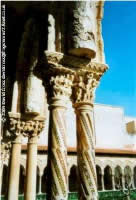 This Duomo must have been quite
remarkable in the twelfth century for the dazzling speed of its construction.
It is believed that it was done and dusted within twelve years. The reason
for this would appear to have been political rivalry between the king and an
archbishop but it does leave us now with a whole building of a single style.
I regarded this visit as being of great historical interest as I had seen
nothing of this type of Greek and Byzantine workmanship, but I did not expect
it to appeal to me artistically. Talk about being bowled over; the impact of
the view of the interior on entry was like a physical blow. Although I have
seen nothing of its type to equal it, it has left me ready to appreciate a
much wider artistic range of church interiors.
This Duomo must have been quite
remarkable in the twelfth century for the dazzling speed of its construction.
It is believed that it was done and dusted within twelve years. The reason
for this would appear to have been political rivalry between the king and an
archbishop but it does leave us now with a whole building of a single style.
I regarded this visit as being of great historical interest as I had seen
nothing of this type of Greek and Byzantine workmanship, but I did not expect
it to appeal to me artistically. Talk about being bowled over; the impact of
the view of the interior on entry was like a physical blow. Although I have
seen nothing of its type to equal it, it has left me ready to appreciate a
much wider artistic range of church interiors.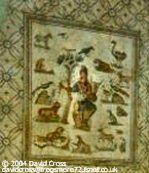 There are some wonderful
mosaics elsewhere in Palermo as well. The church of La Martorana near the
centre has some of these and is probably one of the first things to see in
Palermo. However do not miss seeing the church next to it as well, the little
twelfth century chapel of San Cataldo. This is innocent of mosaics, very
plain in fact, but its very simplicity gives it a considerable appeal.
Strange to English eyes but rather appealing too, are the bright red domes of
the roof. I have more difficulty in writing about the Palazzo dei Normanni,
now the seat of Sicily’s autonomous government. Only a limited amount
can be visited here but this includes the Capella Palatina. Here there are mosaics
which should logically have something of the same effect as those at Monreale.
However for me, although I could appreciate the skill and artistry well
enough, they had no such impact. It was not anti-climax because I saw these
before going out to Monreale. In the Capella I was more fascinated by the
lovely Arabic ceiling. Whilst on the subject of churches I shall mention one
that is no longer consecrated but is a striking building. This is San
Giovanni degli Eremiti, not far from the Piazza del’ Independenza and
the Norman palace. The twelfth century church was built on the remains of an
earlier mosque and it is very much an Arabic type of building, well worth a
visit, although its Christian style cloisters also call. The fact that the
garden is now quite wild seems to enhance rather than detract from the beauty
of the building.
There are some wonderful
mosaics elsewhere in Palermo as well. The church of La Martorana near the
centre has some of these and is probably one of the first things to see in
Palermo. However do not miss seeing the church next to it as well, the little
twelfth century chapel of San Cataldo. This is innocent of mosaics, very
plain in fact, but its very simplicity gives it a considerable appeal.
Strange to English eyes but rather appealing too, are the bright red domes of
the roof. I have more difficulty in writing about the Palazzo dei Normanni,
now the seat of Sicily’s autonomous government. Only a limited amount
can be visited here but this includes the Capella Palatina. Here there are mosaics
which should logically have something of the same effect as those at Monreale.
However for me, although I could appreciate the skill and artistry well
enough, they had no such impact. It was not anti-climax because I saw these
before going out to Monreale. In the Capella I was more fascinated by the
lovely Arabic ceiling. Whilst on the subject of churches I shall mention one
that is no longer consecrated but is a striking building. This is San
Giovanni degli Eremiti, not far from the Piazza del’ Independenza and
the Norman palace. The twelfth century church was built on the remains of an
earlier mosque and it is very much an Arabic type of building, well worth a
visit, although its Christian style cloisters also call. The fact that the
garden is now quite wild seems to enhance rather than detract from the beauty
of the building.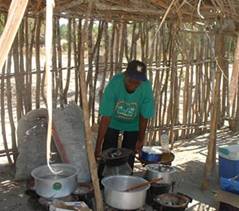 Friday – the shopping trip
to Mtwara took 5 hours whilst Esther searched all over town for
enough chickens to feed this crowd whilst the goat in question was
tethered outside the Boma bleating for a few hours. Saturday –
kitchen a hive of activity chopping, cutting, marinating and
counting bottles of water, soft drinks, plates, glasses, knives,
forks etc. Last minute panic appeared non-existent – my own
memories of the night before a major event of this importance were
very different!
Friday – the shopping trip
to Mtwara took 5 hours whilst Esther searched all over town for
enough chickens to feed this crowd whilst the goat in question was
tethered outside the Boma bleating for a few hours. Saturday –
kitchen a hive of activity chopping, cutting, marinating and
counting bottles of water, soft drinks, plates, glasses, knives,
forks etc. Last minute panic appeared non-existent – my own
memories of the night before a major event of this importance were
very different!
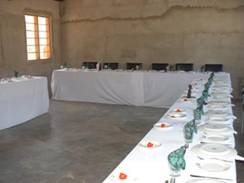 The official party arrived in a flurry of dust as about 40 cars
swept into the school ground. In the background was the celebratory
sound of drums and chanting, and there were dancers that we could
hear but not see from our corner of the school ground. Because they
were so late we abandoned all attempts at ‘silver service’ and put
a couple of desks in the centre of the room as a buffet and allowed
them to help themselves. We were advised to do this so that we
could not be held responsible for delaying them and influencing how
long they took to eat!
The official party arrived in a flurry of dust as about 40 cars
swept into the school ground. In the background was the celebratory
sound of drums and chanting, and there were dancers that we could
hear but not see from our corner of the school ground. Because they
were so late we abandoned all attempts at ‘silver service’ and put
a couple of desks in the centre of the room as a buffet and allowed
them to help themselves. We were advised to do this so that we
could not be held responsible for delaying them and influencing how
long they took to eat!
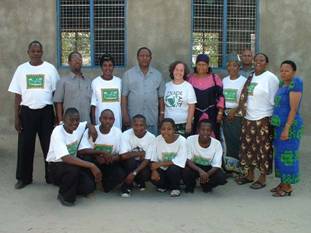 After they had eaten the
District Commissioner invited the whole Boma team into the room,
introduced us and gave a short speech of thanks for providing such
a wonderful lunch. He acknowledged that the Boma is run by Trade
Aid and proceeded to thank Trade Aid for providing this opportunity
for employment and the development of tourism in the Mtwara Region.
The Prime Minister's photographer recorded the event and held a
photo shoot taking a number of pictures on the Trade Aid digital
camera.
After they had eaten the
District Commissioner invited the whole Boma team into the room,
introduced us and gave a short speech of thanks for providing such
a wonderful lunch. He acknowledged that the Boma is run by Trade
Aid and proceeded to thank Trade Aid for providing this opportunity
for employment and the development of tourism in the Mtwara Region.
The Prime Minister's photographer recorded the event and held a
photo shoot taking a number of pictures on the Trade Aid digital
camera.
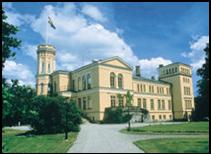 After picking up
our rental car at the airport and after some looking on the map we
found Surahammar Manor. A fantastic place in the Mälar Valley with
romantic surroundings! And such a family atmosphere! The owners
themselves welcomed us and we got a high standard room facing the
parkland. All rooms are individually decorated with elegant
antique furniture. And we really enjoyed the welcome dinner with
Swedish schnapps. In the evening we went early to bed, talked about
our wedding and revelled in that pleasant tired feeling in your
body and serenity in your heart that only a great day can
bring!
After picking up
our rental car at the airport and after some looking on the map we
found Surahammar Manor. A fantastic place in the Mälar Valley with
romantic surroundings! And such a family atmosphere! The owners
themselves welcomed us and we got a high standard room facing the
parkland. All rooms are individually decorated with elegant
antique furniture. And we really enjoyed the welcome dinner with
Swedish schnapps. In the evening we went early to bed, talked about
our wedding and revelled in that pleasant tired feeling in your
body and serenity in your heart that only a great day can
bring!
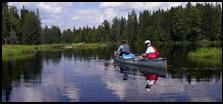 but not. We
were fishing from the Manor’s park! After some hours we had got
four salmon trout and thought it was enough. In the evening we
prepared them together with the cook. Never has a dinner
tasted so good!
but not. We
were fishing from the Manor’s park! After some hours we had got
four salmon trout and thought it was enough. In the evening we
prepared them together with the cook. Never has a dinner
tasted so good!
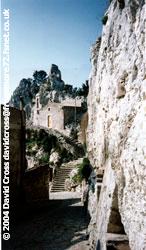 Sciacca is not really on the tourist trail
although it is extremely pleasant and some of the upper town is
really picturesque. There is no really cheap place to stay, though
the Paloma Bianca in Via Figuli was not really dear. The main
appeal of Sciacca for me is the fact that it is an ideal place for
an excellent bus trip to the hill village of Caltabellotta. Sicily
has so much to see [I missed the lovely west coast and most of the
interior, including a terrific Roman villa] that I suspect a lot of
people never make it to any of the smaller towns. Even though I
obviously saw them at the cost of some better known larger places,
Erice in particular, I feel that it is a pity not to sample some
and this is a beaut. From my knowledge of Sicilian hill villages I
would say that somehow they are less picturesque from a distance
but quite as good when inside them as those of the mainland. On the
ride to Caltabellotta it is going up high, rather than heading for
the village, which gives the pleasure and you need to be well up in
the village to see it at its best.
Sciacca is not really on the tourist trail
although it is extremely pleasant and some of the upper town is
really picturesque. There is no really cheap place to stay, though
the Paloma Bianca in Via Figuli was not really dear. The main
appeal of Sciacca for me is the fact that it is an ideal place for
an excellent bus trip to the hill village of Caltabellotta. Sicily
has so much to see [I missed the lovely west coast and most of the
interior, including a terrific Roman villa] that I suspect a lot of
people never make it to any of the smaller towns. Even though I
obviously saw them at the cost of some better known larger places,
Erice in particular, I feel that it is a pity not to sample some
and this is a beaut. From my knowledge of Sicilian hill villages I
would say that somehow they are less picturesque from a distance
but quite as good when inside them as those of the mainland. On the
ride to Caltabellotta it is going up high, rather than heading for
the village, which gives the pleasure and you need to be well up in
the village to see it at its best.
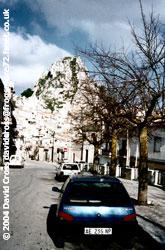 This was only my fifth night out of eleven but already lack of time
was forcing me to adjust my plans. I had meant to go right around
the island anti-clockwise and hopefully to do a trip into the Villa
Imperiale inland. I now realised this was far too much to take on
and I abandoned any notion of reaching the west coast or Segesta, a
spectacular site to the west of the island’s capital, Palermo. This
meant cutting from the south coast to the north at Palermo itself.
I decided on one further southern escapade first – a trip to the
ancient Greek settlement of Selinunte It was necessary to change at
Castelvetrano from the bus bound for Trápani to the local minibus
to Selinunte and the modern village of Marinellla which is little
more than the accommodation for those going to see Selinunte. It
turned out that the wait in this rather ordinary place
[Castelvetrano] was going to be over an hour and a half, and then
when the bus was quarter of an hour late.
This was only my fifth night out of eleven but already lack of time
was forcing me to adjust my plans. I had meant to go right around
the island anti-clockwise and hopefully to do a trip into the Villa
Imperiale inland. I now realised this was far too much to take on
and I abandoned any notion of reaching the west coast or Segesta, a
spectacular site to the west of the island’s capital, Palermo. This
meant cutting from the south coast to the north at Palermo itself.
I decided on one further southern escapade first – a trip to the
ancient Greek settlement of Selinunte It was necessary to change at
Castelvetrano from the bus bound for Trápani to the local minibus
to Selinunte and the modern village of Marinellla which is little
more than the accommodation for those going to see Selinunte. It
turned out that the wait in this rather ordinary place
[Castelvetrano] was going to be over an hour and a half, and then
when the bus was quarter of an hour late.
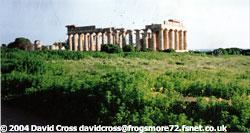 The eastern temples were mainly erected in the sixth century BC and
one of them, Temple E as it rather prosaically named, was
reconstructed in the 1950s. Apparently this was and is
controversial but I feel no qualms about it as long as some are
left as they are found. Whatever, it is a magnificent building and
I am sure a full size re-construction must be the best way of
illustrating to children what these temples were like. The
Acropolis area contains another five temples and most of the
ancient living area as well as the remains of the great walls.
These walls, however, are older than the rest of the remains,
having been built after the city had been destroyed once by
Carthage in order to defend the high ground from further
destructions.
The eastern temples were mainly erected in the sixth century BC and
one of them, Temple E as it rather prosaically named, was
reconstructed in the 1950s. Apparently this was and is
controversial but I feel no qualms about it as long as some are
left as they are found. Whatever, it is a magnificent building and
I am sure a full size re-construction must be the best way of
illustrating to children what these temples were like. The
Acropolis area contains another five temples and most of the
ancient living area as well as the remains of the great walls.
These walls, however, are older than the rest of the remains,
having been built after the city had been destroyed once by
Carthage in order to defend the high ground from further
destructions.
 The name of St Moritz
has an interesting story attached to it: the story told to me was
that Maurice (later turned into Moritz) was a Christian and came
from Egypt. He served in the Roman army under Julius Caesar
and led a Theban legion for the Roman empire and fought in the
Alps. He refused to obey the order of the Emperor Maximian
and sacrifice some Christians to the Roman gods because he was
himself a Christian. On hearing this, Maximian ordered
Maurice's regiment to be decimated – i.e. every tenth person
killed, and this went on until no-one was left. And so
commanding officer Maurice became a saint. Legend has it that
the rock used by Maurice to lay his head on so that he could be
beheaded is at St Moritz. Like England's St George,
St. Maurice is a patron of knights and soldiers. From the
12th century, due the similarity between his name and Maurus, he
was depicted as a Moor, so he became the black saint.
The name of St Moritz
has an interesting story attached to it: the story told to me was
that Maurice (later turned into Moritz) was a Christian and came
from Egypt. He served in the Roman army under Julius Caesar
and led a Theban legion for the Roman empire and fought in the
Alps. He refused to obey the order of the Emperor Maximian
and sacrifice some Christians to the Roman gods because he was
himself a Christian. On hearing this, Maximian ordered
Maurice's regiment to be decimated – i.e. every tenth person
killed, and this went on until no-one was left. And so
commanding officer Maurice became a saint. Legend has it that
the rock used by Maurice to lay his head on so that he could be
beheaded is at St Moritz. Like England's St George,
St. Maurice is a patron of knights and soldiers. From the
12th century, due the similarity between his name and Maurus, he
was depicted as a Moor, so he became the black saint.
 There are lots
of bridges across the River Reuss, it reminded me a little of
Ljubljana, especially with some of the dragon symbols, some of my
friends said Stockholm. One of the most famous is the Chapel
bridge built in the 14th century as a part of the city's
fortifications and named after St. Peter's Chapel, which is
located nearby. It has paintings on it including some info on the
city's patron saints, St. Leodegar and our friend St.
Maurice. There's also a very splendid 17th century
baroque Jesuit church. I really liked the water spikes that
act like a lock to regulate water levels like in a canal. and
you can see the remains of water mills.
There are lots
of bridges across the River Reuss, it reminded me a little of
Ljubljana, especially with some of the dragon symbols, some of my
friends said Stockholm. One of the most famous is the Chapel
bridge built in the 14th century as a part of the city's
fortifications and named after St. Peter's Chapel, which is
located nearby. It has paintings on it including some info on the
city's patron saints, St. Leodegar and our friend St.
Maurice. There's also a very splendid 17th century
baroque Jesuit church. I really liked the water spikes that
act like a lock to regulate water levels like in a canal. and
you can see the remains of water mills.
 On my final day in
Lucerne, I went to the tourist information centre at the train
station and asked where I could go in the mountains. They
suggested a trip to Rigi Kulm, so, using my rail pass, instead of
paying 79 Swiss Francs, it cost me 29 Swiss Francs. It was a
great adventure! I took a boat across Lake Lucerne, and then
a funicular or cog wheel train up the mountain to the top of Rigi
Kulm, about 1,800m, so not too high, and then the cog wheel train
to the half way point and a cable car down to Weggis back down by
the lake, and the boat again back to Lucerne. It was a
wonderful half day trip, where we could see above the clouds, the
mountain tops poking through, then there was the lake and the green
of the alpine pastures leading up to the mountains. There are
a couple of other mountain type trips you can do like this whilst
based in Lucerne.
On my final day in
Lucerne, I went to the tourist information centre at the train
station and asked where I could go in the mountains. They
suggested a trip to Rigi Kulm, so, using my rail pass, instead of
paying 79 Swiss Francs, it cost me 29 Swiss Francs. It was a
great adventure! I took a boat across Lake Lucerne, and then
a funicular or cog wheel train up the mountain to the top of Rigi
Kulm, about 1,800m, so not too high, and then the cog wheel train
to the half way point and a cable car down to Weggis back down by
the lake, and the boat again back to Lucerne. It was a
wonderful half day trip, where we could see above the clouds, the
mountain tops poking through, then there was the lake and the green
of the alpine pastures leading up to the mountains. There are
a couple of other mountain type trips you can do like this whilst
based in Lucerne.